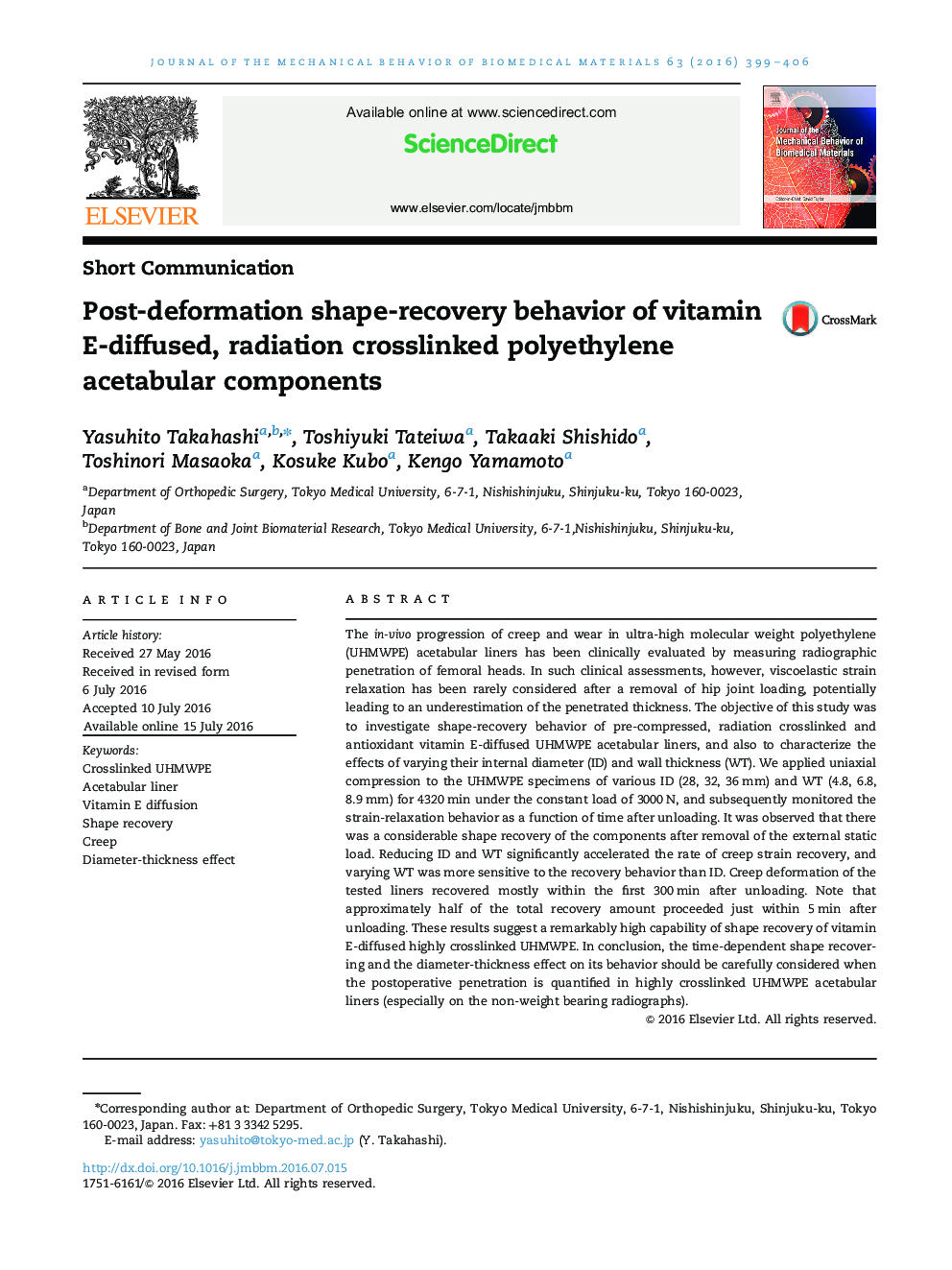| Article ID | Journal | Published Year | Pages | File Type |
|---|---|---|---|---|
| 7207763 | Journal of the Mechanical Behavior of Biomedical Materials | 2016 | 8 Pages |
Abstract
The in-vivo progression of creep and wear in ultra-high molecular weight polyethylene (UHMWPE) acetabular liners has been clinically evaluated by measuring radiographic penetration of femoral heads. In such clinical assessments, however, viscoelastic strain relaxation has been rarely considered after a removal of hip joint loading, potentially leading to an underestimation of the penetrated thickness. The objective of this study was to investigate shape-recovery behavior of pre-compressed, radiation crosslinked and antioxidant vitamin E-diffused UHMWPE acetabular liners, and also to characterize the effects of varying their internal diameter (ID) and wall thickness (WT). We applied uniaxial compression to the UHMWPE specimens of various ID (28, 32, 36Â mm) and WT (4.8, 6.8, 8.9Â mm) for 4320Â min under the constant load of 3000Â N, and subsequently monitored the strain-relaxation behavior as a function of time after unloading. It was observed that there was a considerable shape recovery of the components after removal of the external static load. Reducing ID and WT significantly accelerated the rate of creep strain recovery, and varying WT was more sensitive to the recovery behavior than ID. Creep deformation of the tested liners recovered mostly within the first 300Â min after unloading. Note that approximately half of the total recovery amount proceeded just within 5Â min after unloading. These results suggest a remarkably high capability of shape recovery of vitamin E-diffused highly crosslinked UHMWPE. In conclusion, the time-dependent shape recovering and the diameter-thickness effect on its behavior should be carefully considered when the postoperative penetration is quantified in highly crosslinked UHMWPE acetabular liners (especially on the non-weight bearing radiographs).
Related Topics
Physical Sciences and Engineering
Engineering
Biomedical Engineering
Authors
Yasuhito Takahashi, Toshiyuki Tateiwa, Takaaki Shishido, Toshinori Masaoka, Kosuke Kubo, Kengo Yamamoto,
